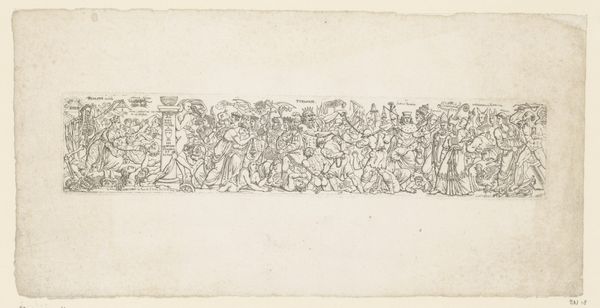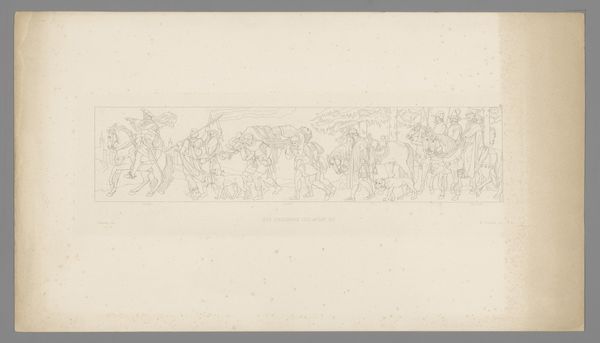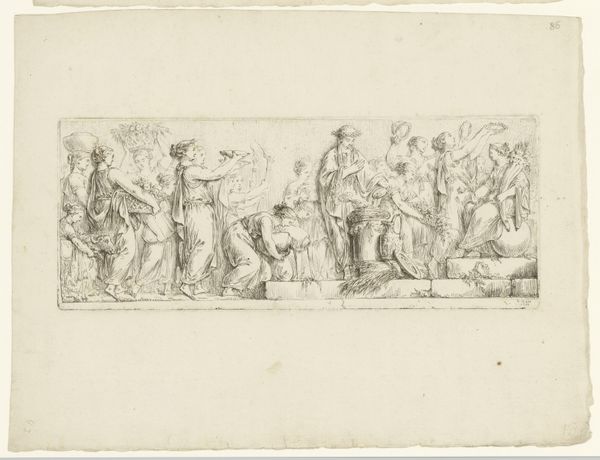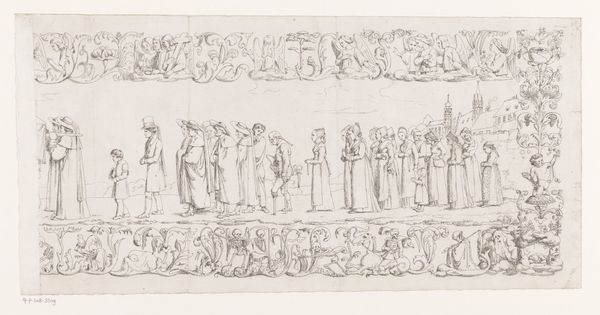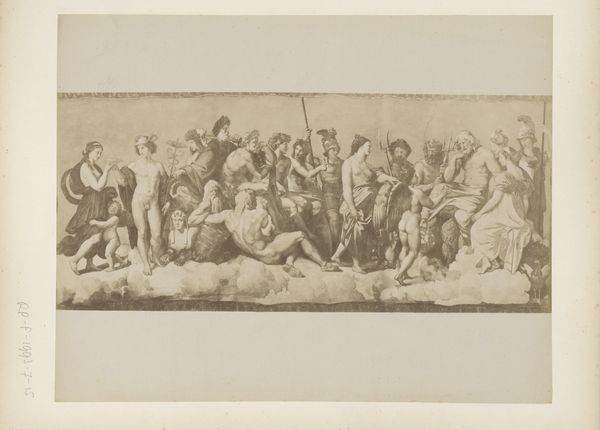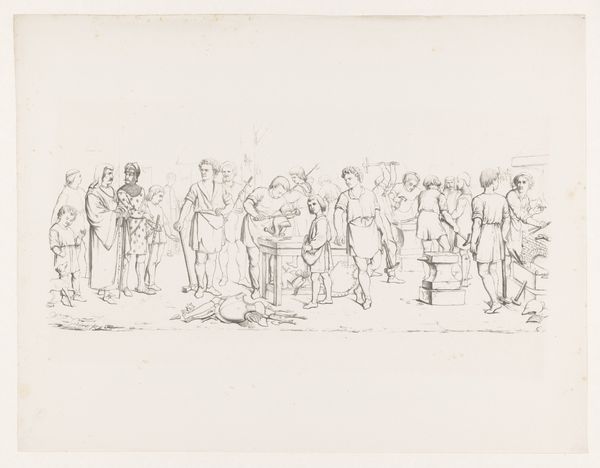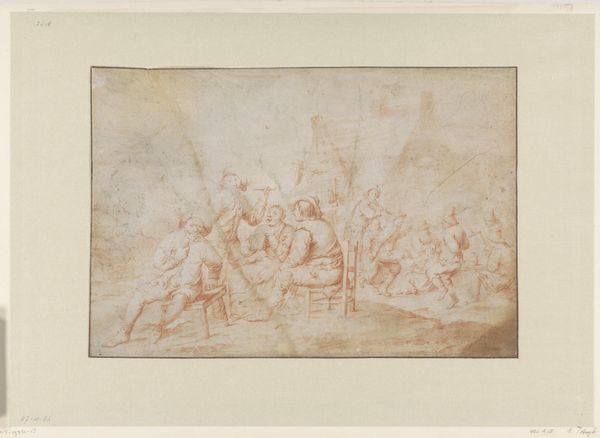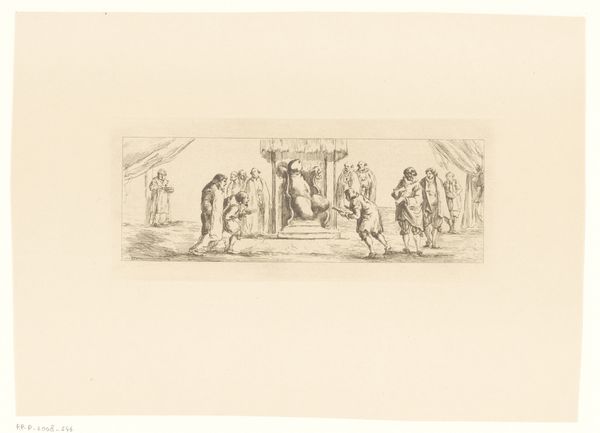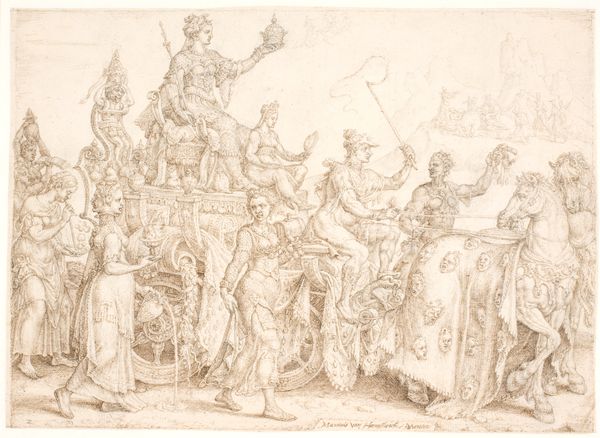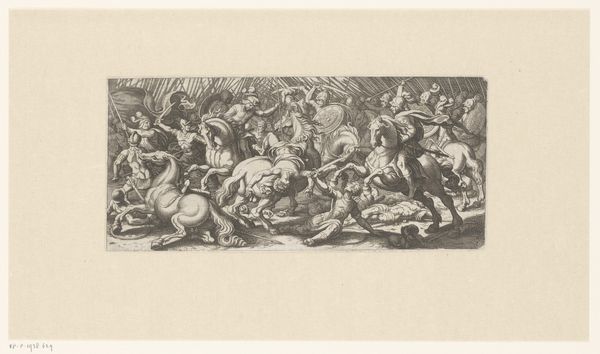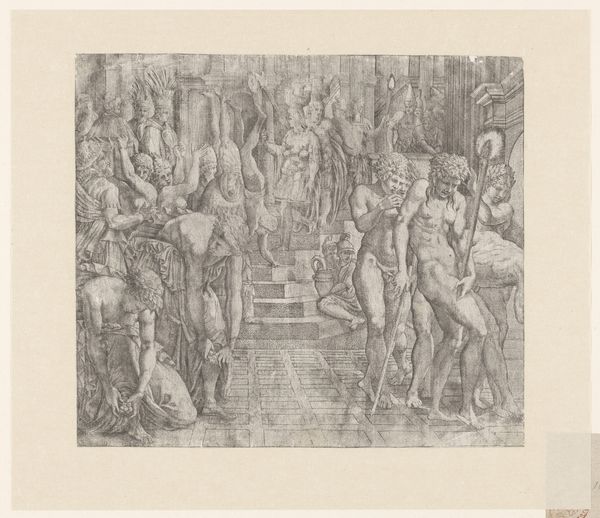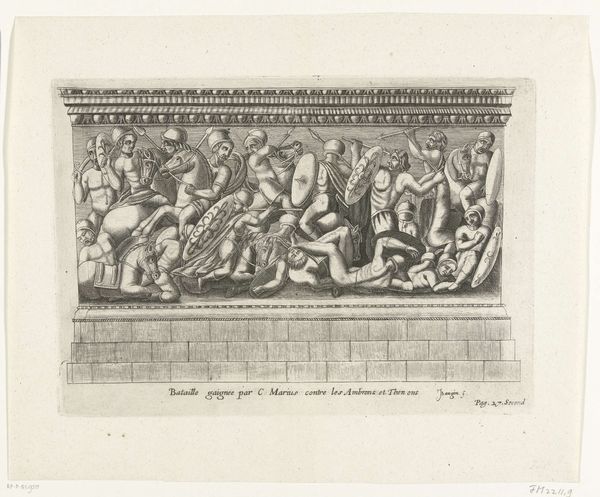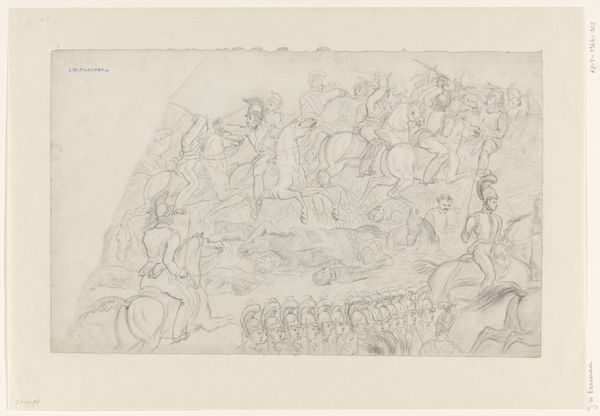
drawing, ink
#
drawing
#
narrative-art
#
ink painting
#
11_renaissance
#
ink
#
line
#
cityscape
#
islamic-art
#
history-painting
Dimensions: 110 mm (height) x 460 mm (width) (bladmaal)
Editor: This drawing, titled "Suleiman the Magnificent's Procession," is attributed to an anonymous artist and dates back to sometime between 1550 and 1650. It's done in ink, and it’s currently held at the SMK in Copenhagen. What a remarkable scene. I find the meticulous line work so captivating! What do you see in this piece? Curator: This ink drawing offers a glimpse into the powerful symbolism of processions in Ottoman culture. Think about the weight that such an image carried. A parade is not just people walking; it’s a visual language designed to convey power, order, and legitimacy. Can you sense the rhythm within this seemingly linear parade? Editor: I can! There's a definite rhythm created by the repetition of figures and the way they're spaced. It almost feels like a frieze from ancient times. So, is that rhythm intentional, beyond just representing the procession accurately? Curator: Absolutely! That rhythm reinforces the idea of an inexorable force, a body politic moving in perfect harmony under Suleiman’s rule. And note the attention to detail in the figures' clothing and weaponry; each element contributes to the overall message of military strength and imperial grandeur. Have you ever considered what the presence of camels does for this visual narrative? Editor: It adds to the exoticism for sure! It speaks to the Ottoman Empire's vast reach and access to resources, maybe even hinting at the Silk Road and its importance. Curator: Precisely! The camels are symbols of trade, wealth, and the Empire’s connection to distant lands. Everything is purposefully included to cement a visual identity that resonates through time. This wasn't just a depiction; it was an ideological statement. Editor: This drawing offers such a great illustration of how historical and cultural memory could be embedded in an artwork. I definitely appreciate the power of processions, and I see this drawing in a new light now. Curator: And I think this artwork underscores how visual representations solidify and perpetuate narratives, shaping collective understanding and cultural identity, then and now.
Comments
No comments
Be the first to comment and join the conversation on the ultimate creative platform.
